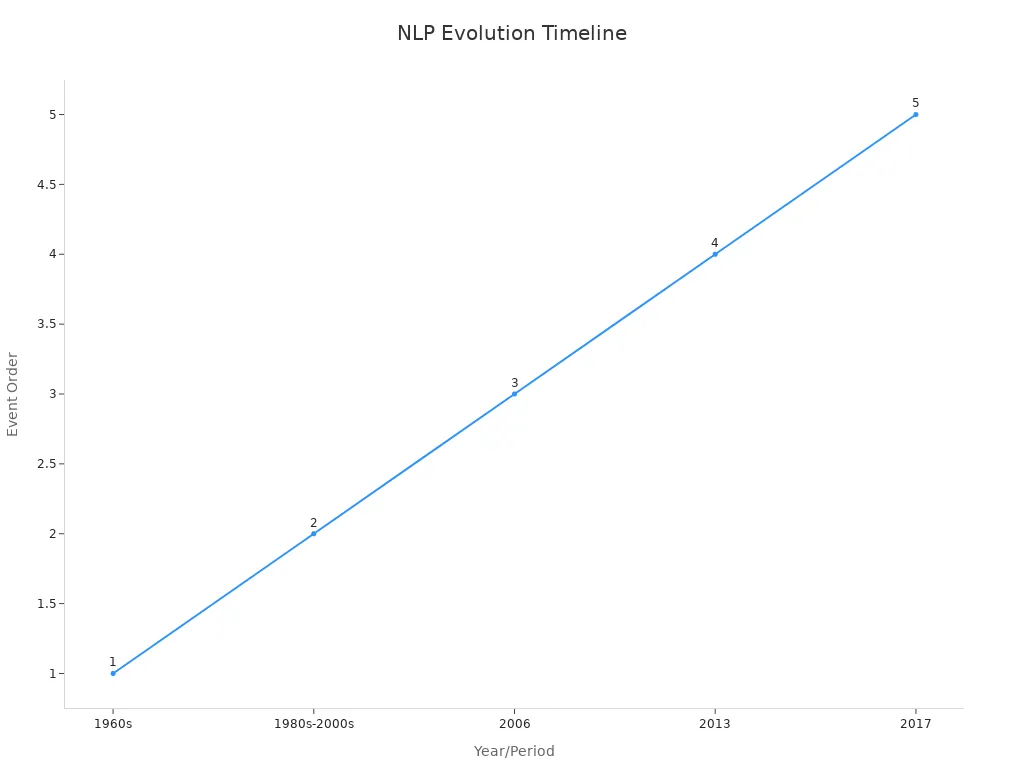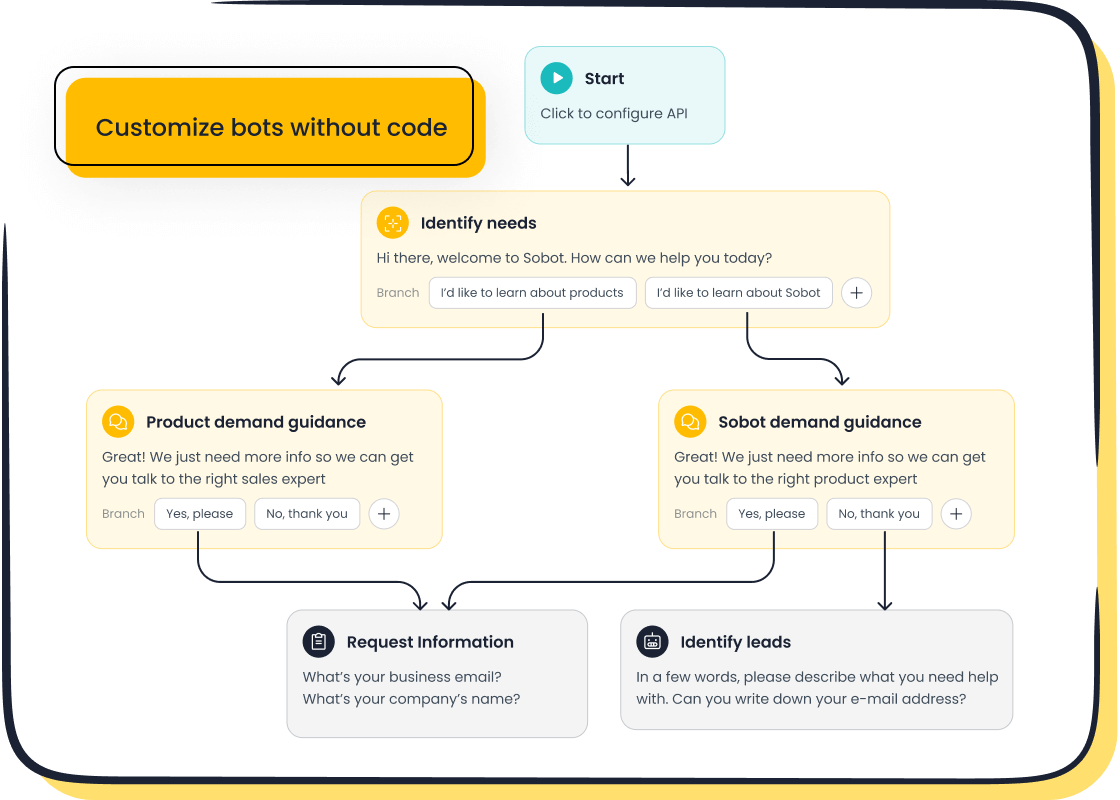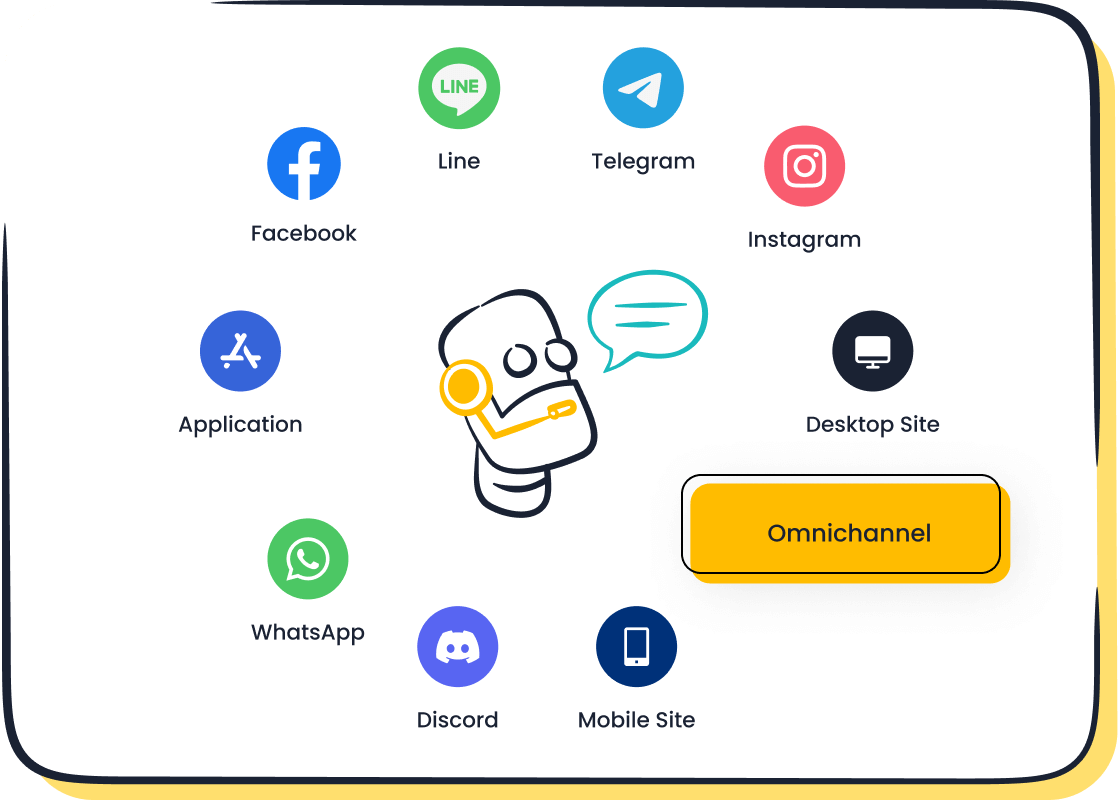Top Trends Shaping Chatbots in E-commerce for 2025

E-commerce chatbots are revolutionizing the way businesses connect with customers. These smarter chatbots, powered by artificial intelligence, provide instant responses, personalized recommendations, and seamless shopping experiences. You now interact with systems that understand your preferences, anticipate your needs, and offer solutions in real time. Generative AI chatbots have elevated conversational service by using advanced artificial intelligence to mimic human-like interactions.
Sobot leads this transformation with its innovative AI chatbot. It combines generative technology and conversational capabilities to deliver faster, smarter service. For example, businesses using Sobot's chatbot in ecommerce can handle queries 24/7, reduce costs by up to 50%, and boost conversions by 20%. This integration of AI in e-commerce ensures smooth customer journeys while enhancing efficiency for businesses.
Hyper-Personalization and Predictive Analytics in Chatbot in Ecommerce
Defining Hyper-Personalization in E-commerce Chatbots
Hyper-personalization in e-commerce chatbots goes beyond basic personalization. It leverages artificial intelligence to analyze customer data, such as browsing history, purchase behavior, and even social media activity. This approach allows chatbots to deliver tailored recommendations and offers that resonate with individual preferences. For instance, a chatbot might suggest a product based on your recent searches or notify you about discounts on items you frequently purchase.
Retailers use hyper-personalization to bridge the gap between online and offline shopping. By providing tailored offers and human-like interactions, chatbots create seamless and engaging user experiences. Metrics like bot accuracy rate, which measures how often a chatbot provides correct responses, highlight the effectiveness of these systems. A high accuracy rate ensures that chatbots understand user intent, enhancing the overall conversational user experience.
Predictive Analytics for Anticipating Customer Needs
Predictive analytics empowers e-commerce chatbots to anticipate customer needs before they arise. By processing complex datasets, AI-driven chatbots identify patterns in customer behavior. For example, they can predict when a customer might run out of a product and proactively suggest a reorder. This capability not only improves customer satisfaction but also drives sales.
Deep learning and predictive modeling refine these recommendations, ensuring interactions remain relevant and timely. Chatbots equipped with predictive analytics provide real-time, tailored support at scale. This enhances customer engagement and fosters personalized customer journeys, making every interaction meaningful.
Sobot AI Chatbot’s Role in Personalized Shopping Experiences

Sobot's AI chatbot exemplifies the power of hyper-personalization and predictive analytics. It uses generative AI to analyze customer data and deliver customized recommendations. Businesses using Sobot's chatbot in ecommerce benefit from a 20% boost in conversions, thanks to features like proactive push messaging and real-time intent assistance.
The chatbot’s multilingual support ensures global accessibility, while its no-coding-required setup makes it easy to deploy. By integrating seamlessly with various platforms, Sobot enables businesses to create data-driven personalization strategies that enhance user experiences. For example, OPPO achieved an 83% chatbot resolution rate and a 57% increase in repurchase rates by leveraging Sobot's solutions. These results highlight the transformative potential of AI chatbot trends in e-commerce.
Advancements in Conversational AI and NLP for Generative AI Chatbots
Evolution of NLP Capabilities in Generative AI
Natural Language Processing (NLP) has transformed how e-commerce chatbots interact with users. Early systems like ELIZA and SHRDLU in the 1960s could only handle basic conversations. Over time, advancements such as statistical methods in the 1980s and Google Translate in 2006 brought more practical applications. The introduction of Word2Vec in 2013 improved semantic understanding, while the Transformer Model in 2017 revolutionized data processing for generative AI.
These developments have enabled chatbots to understand context, tone, and intent more effectively. For instance, modern e-commerce chatbots can now interpret complex queries and provide accurate responses in real-time. This evolution has made conversational AI a cornerstone of customer engagement in e-commerce.

Multilingual Support for Global E-commerce Chatbots
Multilingual support has become essential for e-commerce chatbots aiming to reach global audiences. By communicating in multiple languages, chatbots enhance customer experience and expand market reach. Localization, which adapts responses to cultural contexts, boosts purchases by 87%. It also fosters trust and loyalty among users.

For example, Sobot’s AI chatbot supports multiple languages, allowing businesses to connect with diverse customers. This feature is particularly valuable for global e-commerce brands, as it ensures seamless communication across regions. By overcoming language barriers, multilingual chatbots drive higher engagement and sales.
Real-Time Contextual Understanding with Sobot AI Chatbot
Real-time interaction is critical for delivering exceptional customer experiences. Sobot’s AI chatbot excels in real-time contextual understanding, enabling it to provide accurate and timely responses. It analyzes customer data, such as browsing history and purchase behavior, to offer personalized recommendations instantly.
For instance, if a customer abandons their cart, the chatbot can proactively suggest discounts or alternative products. This capability not only improves customer satisfaction but also boosts conversions. Sobot’s chatbot integrates seamlessly with various platforms, ensuring consistent and efficient support across channels.
| Statistic Description | Value | Source |
|---|---|---|
| Expected customer interactions with virtual assistants by 2025 | 37% | Tech Target |
| Reduction in virtual agent deployment time due to pre-trained models | 30% | Cases Media |
| Improvement in operational efficiency for businesses using these technologies | 30% | McKinsey |
| Percentage of U.S. internet users using voice search features | 40% | eMarketer |
| Projected global voice assistant market value by 2025 | $27.3 billion | Statista |
Integration of Voice and Visual Commerce in E-commerce Chatbots

Voice-Activated Shopping Assistants and Sobot AI Solutions
Voice-activated shopping assistants are transforming how you interact with e-commerce platforms. These assistants allow you to search for products, place orders, and resolve queries using simple voice commands. Speaking is faster than typing, making voice interfaces ideal for mobile users and those seeking hands-free convenience. For example, you can ask a chatbot to find a specific product or check delivery status while multitasking.

Sobot’s AI chatbot integrates voice capabilities to enhance customer experiences. It uses real-time speech recognition and generative AI to understand your intent and provide accurate responses. This feature is especially beneficial for users with disabilities, as it offers accessibility without requiring manual input. By combining voice commands with conversational AI, Sobot ensures seamless and efficient interactions across platforms. Businesses using Sobot’s solutions can improve customer satisfaction and operational efficiency, making voice-activated assistants a valuable tool in modern e-commerce.
Visual Search and AI-Powered Product Recommendations
Visual search simplifies the shopping process by allowing you to use images to find related items. This intuitive method reduces friction, enabling instant and accurate product identification. For instance, you can upload a photo of a product you like, and the chatbot will suggest similar options or provide details about availability. Augmented reality and image recognition technologies further enhance this experience by offering realistic previews and tailored recommendations.

Sobot’s AI chatbot leverages visual search to deliver personalized shopping experiences. It uses generative AI to analyze uploaded images and suggest products that match your preferences. This capability not only speeds up the buying process but also increases engagement. Businesses adopting visual search tools see higher conversion rates, as customers find what they need quickly and effortlessly. With Sobot’s solutions, you can enjoy a smarter and more interactive shopping journey.
Accessibility Enhancements Through Voice and Visual Features
Voice and visual features improve accessibility for all users, especially those with disabilities. Synchronizing voice commands with visual cues enhances usability, making interactions more intuitive. For example, a chatbot can display product images while describing them aloud, ensuring clarity and convenience. Customizing voice tone fosters emotional connections, building trust and loyalty among users.
Sobot’s AI chatbot excels in accessibility enhancements. Its voice interface allows you to interact naturally, while visual search ensures inclusivity for users with diverse needs. These features make e-commerce platforms more user-friendly, driving engagement and satisfaction. By integrating voice and visual capabilities, Sobot empowers businesses to deliver exceptional customer experiences that cater to everyone.
Omnichannel and Social Commerce Synergy with Generative AI Chatbots
Unified Customer Experiences Across Channels
You expect seamless interactions when switching between platforms during your shopping journey. Omnichannel e-commerce chatbots make this possible by unifying customer experiences across channels. These chatbots ensure consistent communication, whether you’re browsing a website, chatting on social media, or visiting a physical store.

Companies that excel in customer experience often see remarkable results. Studies show that satisfied customers spend 140% more, and businesses with improved customer satisfaction achieve up to 2x revenue growth compared to competitors. Sobot’s AI chatbot supports omnichannel communication, allowing you to interact across platforms like WhatsApp, SMS, and email. This integration reduces service costs by up to 20% while enhancing operational efficiency.
By delivering consistent support, e-commerce chatbots improve retention rates and foster loyalty. A mere 5% increase in retention can boost profits by up to 95%. With Sobot’s solutions, businesses can create unified experiences that drive engagement and satisfaction.
Social Media Shopping and Influencer Marketing with Sobot AI
Social media has become a hub for shopping and influencer marketing. E-commerce chatbots play a vital role in this space by enabling direct purchases through platforms like Instagram and Facebook. You can interact with a chatbot to explore products, ask questions, and complete transactions without leaving the app.
Sobot’s AI chatbot enhances social commerce by integrating with popular platforms. It provides instant responses, personalized recommendations, and proactive messaging to guide your shopping decisions. Influencers also benefit from these chatbots, as they can automate interactions with followers, promoting products more effectively.
This synergy boosts conversion rates significantly. Businesses using AI chatbots report a 23% increase in conversions and faster issue resolution. By leveraging Sobot’s solutions, brands can tap into the power of social media to enhance customer engagement and drive sales.
Bridging Online and Offline Commerce Using AI Chatbots
AI chatbots bridge the gap between online and offline commerce by offering consistent support across both environments. Whether you’re shopping online or visiting a store, these chatbots provide immediate assistance, ensuring a smooth experience.
For example, you can use a chatbot to check product availability in a nearby store or schedule an in-store pickup. Sobot’s AI chatbot excels in this area, integrating seamlessly with business systems to provide real-time updates. It also facilitates purchases through social media, allowing you to buy directly from platforms you prefer.
This approach improves customer engagement and retention. Chatbots enhance service quality by resolving queries instantly, which drives satisfaction and loyalty. With Sobot’s solutions, businesses can create a unified commerce experience that meets your needs wherever you shop.
Emotionally Intelligent Chatbots in E-commerce

Understanding and Responding to Customer Emotions
Emotionally intelligent chatbots are transforming e-commerce by understanding and responding to customer emotions. These AI-powered systems analyze text, tone, and context to detect emotional cues like frustration, excitement, or confusion. For example, if you express dissatisfaction about a delayed delivery, the chatbot can acknowledge your concern and offer solutions like expedited shipping or discounts.
Studies highlight the importance of empathy in chatbot interactions. Chatbots that demonstrate empathy improve customer satisfaction and emotional responses. For instance, empathetic responses during service failures reduce blame and foster trust. This capability ensures that your experience feels human-like, even when interacting with AI.
| Study Focus | Findings |
|---|---|
| Emotional Context in Chatbot Interaction | Emotional contexts impact consumer evaluations of chatbots versus human representatives. |
| Importance of Empathy | Empathy in chatbot interactions enhances satisfaction and emotional responses. |
| Empathy's Impact on Customer Satisfaction | Empathetic chatbot services positively influence satisfaction and repurchase intentions. |
Building Trust and Loyalty Through Empathy
Empathy builds trust and loyalty in e-commerce. When chatbots respond to your concerns with understanding, they create a positive perception of the brand. Research shows that empathetic AI chatbots enhance customer trust during service failures. This trust leads to stronger loyalty, as you feel valued and understood.

Sobot’s AI chatbot exemplifies this approach. It uses generative AI to deliver empathetic responses tailored to your needs. For instance, if you encounter an issue with a product, the chatbot can offer personalized solutions while maintaining a conversational tone. This human-like interaction fosters trust and encourages repeat purchases. Businesses using Sobot’s chatbot report higher customer satisfaction and retention rates, showcasing the impact of empathy-driven AI solutions.
Use Cases of Emotionally Intelligent Chatbots in E-commerce
Emotionally intelligent chatbots are already making waves in e-commerce. Leading brands use these systems to enhance customer experiences:
- Nike: Stylebot helps you personalize sneakers, offering tailored recommendations based on preferences.
- Sephora: Chatbots provide makeup advice, tutorials, and appointment bookings, creating a seamless shopping journey.
- eBay: ShopBot assists in product discovery and auction updates, asking relevant questions to refine your search.
Sobot’s AI chatbot also delivers emotionally intelligent solutions. It combines hyper-personalization with empathy to address your needs effectively. For example, it can proactively suggest products based on your browsing history while responding empathetically to concerns. This approach ensures that every interaction feels meaningful, driving satisfaction and loyalty.
Blockchain and Data Security for AI Chatbot Trends
Ensuring Secure Transactions and Data Privacy
E-commerce chatbots handle sensitive customer data, making security a top priority. Blockchain technology enhances data protection by creating a decentralized and immutable ledger. This ensures that once data is recorded, it cannot be altered without consensus. For example, blockchain prevents unauthorized changes to transaction records, safeguarding customer trust.
AI-powered chatbots also employ encryption to protect sensitive information. This process scrambles data, making it unreadable to unauthorized users. Authentication methods, such as two-factor verification, further enhance security by confirming user identity. Additionally, compliance with regulations like GDPR and CCPA ensures responsible data handling. These measures collectively create a secure environment for transactions, reducing risks and building confidence in e-commerce platforms.

Sobot’s AI chatbot integrates these security features seamlessly. Its compliance with global data protection standards ensures that your interactions remain private and secure. This makes Sobot a reliable choice for businesses aiming to protect customer data while delivering exceptional service.
Transparency in AI-Driven Customer Interactions
Transparency is essential for building trust in AI systems. Blockchain technology supports this by offering a clear audit trail for data collection and usage. This promotes ethical practices and ensures accountability in AI-driven customer interactions. For instance, businesses can use blockchain to document how chatbots process customer queries, providing clarity on decision-making processes.
Metrics also play a key role in improving transparency. Objective evaluations assess chatbot performance, while data-driven insights guide product improvements. Regular audits ensure accountability and help identify biases in AI systems. These practices enhance customer confidence, as users can see how their data is being used.
Sobot’s AI chatbot exemplifies transparency by providing detailed reports on customer interactions. This feature allows businesses to monitor performance and optimize their services. By prioritizing transparency, Sobot helps you create meaningful and trustworthy customer experiences.
| Metric Type | Description |
|---|---|
| Objective Evaluation | Quantifies AI performance, user engagement, and business impact. |
| Data-Driven Decisions | Identifies strengths and weaknesses for informed product iterations. |
| Accountability and Transparency | Enhances trust by documenting AI involvement in customer journeys. |
Blockchain’s Role in Building Customer Trust
Blockchain technology plays a pivotal role in enhancing customer trust for e-commerce chatbots. Its immutable nature ensures that data and transactions remain secure, providing users with confidence in the system. For example, blockchain records all interactions on a transparent ledger, creating a clear audit trail. This reassures customers that their data is handled ethically and securely.
Sobot’s AI chatbot leverages blockchain to deliver secure and transparent interactions. By integrating blockchain features, Sobot ensures that your data remains protected from unauthorized access. This approach not only builds trust but also strengthens customer loyalty. Businesses using Sobot’s solutions benefit from enhanced user confidence, which translates into higher engagement and retention rates.
| Benefit | Description |
|---|---|
| Secure Data Handling | Protects data from unauthorized changes during interactions. |
| Transparent Transactions | Provides a clear audit trail, enhancing transparency. |
| Enhanced User Trust | Builds confidence through secure and ethical data management. |
Proactive and Predictive Engagement with Generative AI Chatbots
Anticipating Customer Needs Before They Arise
E-commerce chatbots are evolving to predict your needs before you even express them. By analyzing past interactions and preferences, these AI-driven systems tailor responses to match your expectations. For instance, if you frequently purchase skincare products, a chatbot might remind you to reorder before you run out. This proactive approach enhances user engagement and ensures you feel valued as a customer.
AI and machine learning play a crucial role in this transformation. These technologies enable chatbots to analyze customer data, predict behavior, and refine their recommendations over time. This iterative process ensures that every interaction becomes more personalized and relevant. Businesses adopting these generative AI trends see improved customer satisfaction and loyalty, as chatbots provide real-time, meaningful support.
| Feature | Description |
|---|---|
| Smarter, AI-Driven Self-Service | Chatbots anticipate customer needs and understand context for better support. |
| True Omnichannel Support | Future systems unify customer interactions across multiple channels for a seamless experience. |
| Hyper-Personalization in Real Time | Chatbots adapt interactions based on real-time customer behavior and preferences. |
| Empowered Support Agents | AI tools assist agents by summarizing tickets and suggesting replies, enhancing their efficiency. |
Proactive Problem-Solving and Upselling Opportunities
Generative AI chatbots excel at solving problems before they escalate. If you encounter an issue, the chatbot can offer solutions instantly, such as troubleshooting steps or connecting you with a live agent. This proactive problem-solving reduces frustration and builds trust.
These chatbots also identify upselling opportunities by analyzing your browsing history and purchase patterns. For example, if you buy a smartphone, the chatbot might suggest accessories like cases or headphones. This strategy not only boosts sales but also enhances your shopping experience by offering relevant recommendations.
| Statistic Description | Value |
|---|---|
| Increase in sales | 67% |
| Transactions from chatbots | 26% |
| Faster sales due to chatbots | 35% |
| Website visitors turning into leads | 28% |
| Conversion rates | 70% |
| Better lead generation | 50% |
| Increased productivity | 64% |
| Customer request resolution | 75%-90% |
Examples of Predictive Engagement in E-commerce
Predictive engagement strategies are reshaping ecommerce trends. Businesses use AI chatbots to align inventory with predicted sales patterns, ensuring popular products remain in stock. This minimizes waste and maximizes profit margins.
Dynamic pricing strategies also leverage predictions for 2025. For instance, a price elasticity coefficient of -1.2 means a 1% price drop could increase demand by 1.2%. Chatbots analyze these trends to recommend optimal pricing, keeping businesses competitive.
| Case Study Description | Key Insights |
|---|---|
| Aligning inventory procurement with predicted sales patterns | Minimized write-offs and ensured popular products remained in stock during high-demand periods, improving profit margins and customer satisfaction. |
| Segmenting customers based on behavior | Tailored marketing strategies and personalized experiences by analyzing purchase frequency and responsiveness to discounts. |
| Implementing dynamic pricing strategies | A price elasticity coefficient of -1.2 indicated that a 1% price decrease could lead to a 1.2% increase in demand, optimizing competitiveness and profitability. |
| Analyzing website design changes | Improved conversion rates through optimization based on regression analysis of design changes. |
| Forecasting seasonal demand | Enhanced accuracy in demand forecasting by modeling seasonal variations, addressing common e-commerce challenges. |

Sobot’s AI chatbot embodies these generative AI trends. It uses predictive analytics to anticipate your needs, solve problems proactively, and suggest relevant products. This approach not only improves your shopping experience but also drives business growth.
E-commerce chatbots are reshaping the industry by delivering hyper-personalized experiences, predictive engagement, and seamless omnichannel support. These AI-driven tools reduce cart abandonment, boost conversions, and enhance customer satisfaction. Sobot AI Chatbot exemplifies this transformation, offering multilingual support, real-time contextual understanding, and cost-effective solutions. Businesses leveraging generative AI chatbots gain a competitive edge, saving time for users while driving growth. To stay ahead, you should integrate conversational AI into your strategy, focus on personalization, and prioritize secure, transparent interactions. These predictions highlight the immense potential of chatbots in ecommerce for 2025.
| Trend/Impact | Description |
|---|---|
| Increase in conversion rates | AI chatbots utilize predictive analytics to engage customers proactively, leading to higher sales. |
| Reduction in cart abandonment | Chatbots notify customers about items in their cart, which helps in reducing abandonment rates. |
| Enhanced customer satisfaction | Quick responses from chatbots improve overall customer experience and loyalty. |
| Cost-effective customer service | Chatbots can handle multiple queries simultaneously without compromising quality. |
| Competitive edge in digital marketplace | E-commerce brands use chatbots to provide superior customer service, helping them stand out. |
| Time-saving for users | 36% of users report that chatbots save them time and make tasks easier. |
FAQ
What are e-commerce chatbots, and how do they work?
E-commerce chatbots are AI-powered tools that assist customers during their shopping journey. They use natural language processing to understand queries and provide instant responses. These chatbots can recommend products, resolve issues, and even process orders, ensuring a seamless shopping experience.
How do generative AI chatbots improve customer interactions?
Generative AI chatbots create human-like conversations by analyzing context and intent. They adapt responses in real time, making interactions more personalized. For example, they can suggest products based on browsing history or offer solutions to common issues, enhancing customer satisfaction.
Can chatbots handle multilingual support effectively?
Yes, modern chatbots, like Sobot’s AI chatbot, excel in multilingual support. They communicate in multiple languages, ensuring accessibility for global audiences. This feature helps businesses expand their reach and connect with diverse customers effortlessly.
Are e-commerce chatbots secure for handling sensitive data?
E-commerce chatbots prioritize security by using encryption and compliance with data protection regulations like GDPR. Some, like Sobot’s chatbot, also integrate blockchain technology for added transparency and trust, ensuring your data remains safe.
How do chatbots benefit businesses in ecommerce?
Chatbots reduce operational costs, improve efficiency, and boost conversions. For instance, Sobot’s AI chatbot increases productivity by 70% and saves up to 50% on agent costs. These tools also enhance customer engagement, driving loyalty and repeat purchases.
See Also
Enhancing Customer Satisfaction Through E-commerce Chatbots
Best Live Chat Solutions for E-commerce This Year
Ten Leading Chatbots for Websites in 2024
